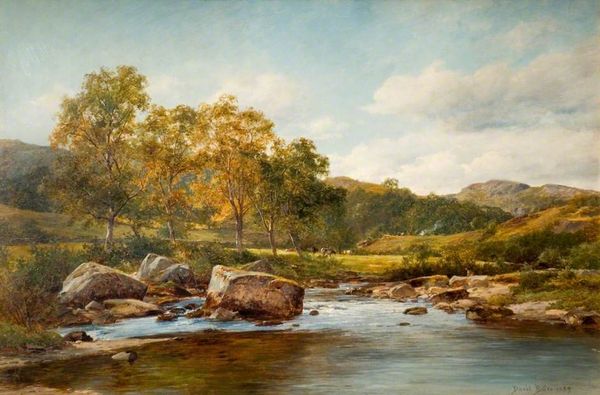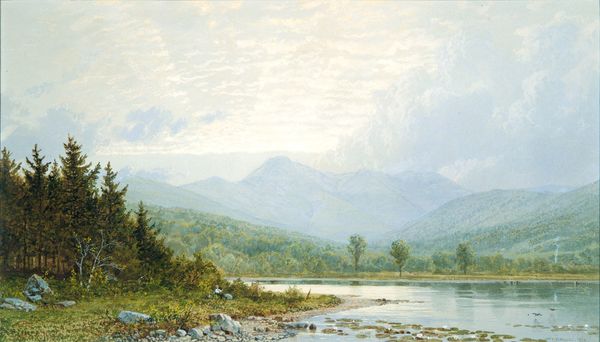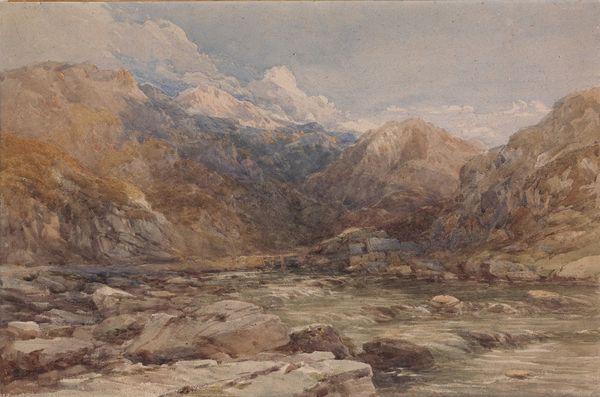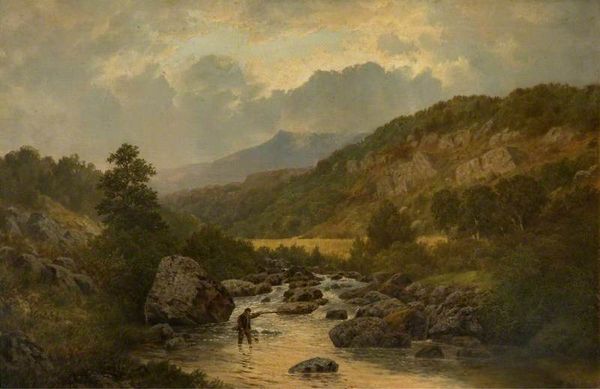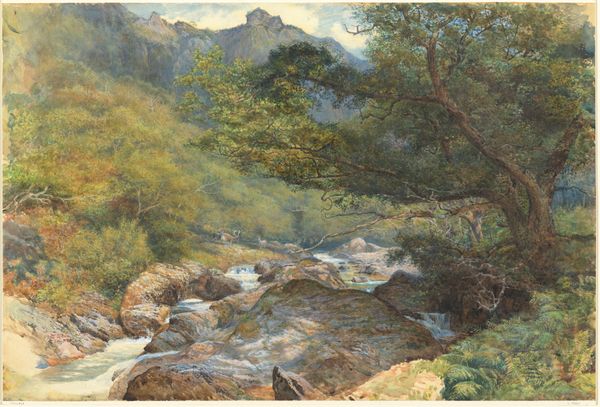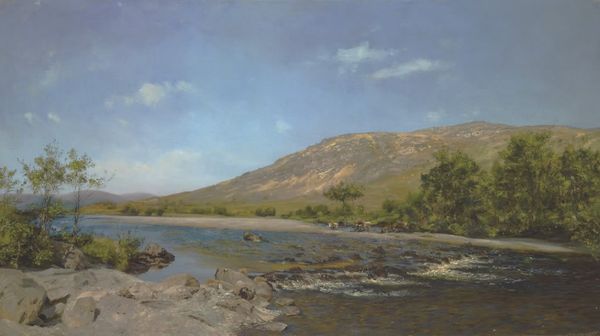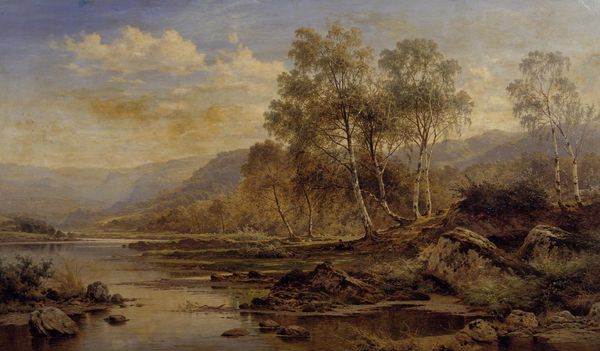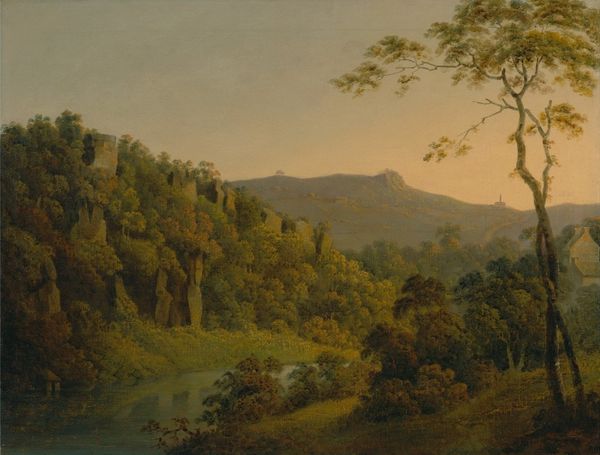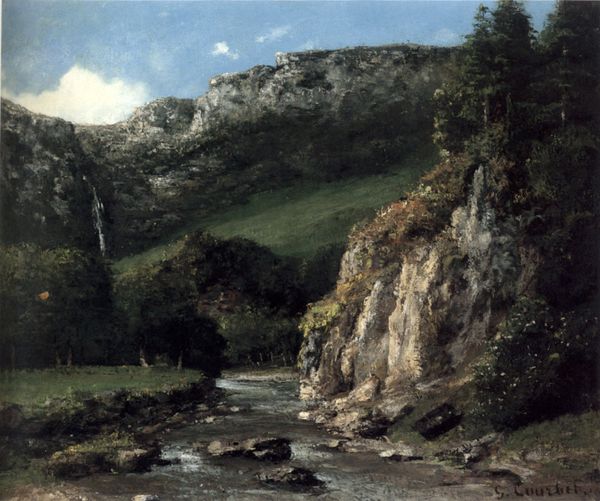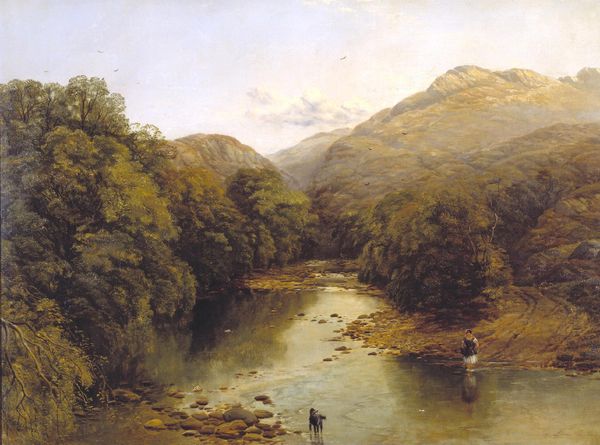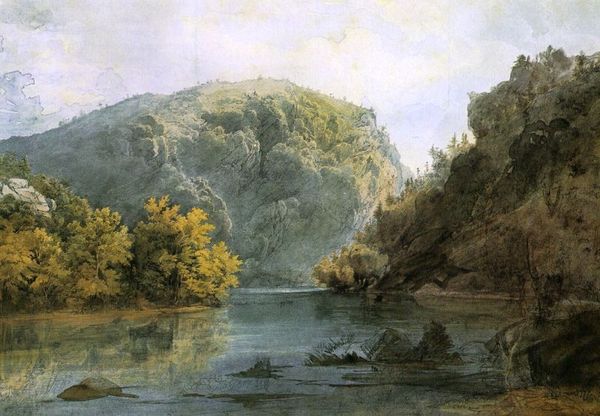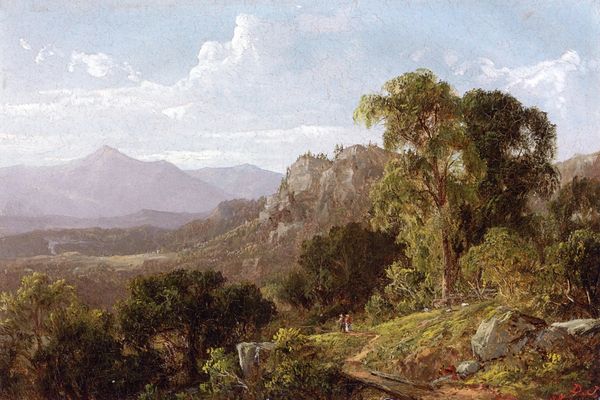
painting, plein-air, oil-paint, canvas
#
painting
#
impressionism
#
plein-air
#
oil-paint
#
landscape
#
impressionist landscape
#
nature
#
oil painting
#
canvas
Dimensions: 37.5 cm (height) x 58 cm (width) (Netto), 51.5 cm (height) x 73 cm (width) (Brutto)
Curator: It's interesting how tranquil this feels, a sort of subdued majesty. The light is beautiful but subtle. Editor: Indeed. What we’re looking at is titled “Formiddag ved Garonne. Montréjeau,” or "Morning by the Garonne, Montréjeau." It's an oil on canvas, painted in 1865 by Janus la Cour, part of the collection here at the SMK. La Cour, a Danish artist, found inspiration in these open-air studies. Curator: It feels like a space for contemplation. The Garonne River meanders serenely; it makes you think about our relationship to the environment, perhaps, a reminder of how nature is shaped by its surroundings. What were the major influences in outdoor life at this period? Were more people using and viewing such scenes like this in real time? Editor: Absolutely. During the mid-19th century, landscapes became more popular and more public with greater exhibition and increased tourism. There’s a movement from Romanticism into early Impressionism and the rise of plein-air painting made possible through advancements in materials like pre-packaged paint tubes. Artists capture ephemeral moments in ways we hadn’t quite seen before. The ability for individuals to travel outside of larger urban hubs really pushed such themes to the front of consciousness in both life and in art. Curator: That resonates. Thinking about audience—were the leisurely viewing practices depicted something many had the privilege to experience, or was this nature rendered from the perspective of a particular social stratum? Editor: That's a vital point. While landscape painting grew in popularity, access to these idyllic scenes remained largely a privilege. Artists like La Cour, often from bourgeois backgrounds, could dedicate their time to painting outdoors and attract viewership to museums. The aestheticization of the landscape, therefore, also becomes a lens through which class structures become all the more transparent. The scene might represent leisure, access, or freedom for the artist but also a kind of longing for those outside such circles. Curator: A longing that’s still palpable. Seeing it from that angle provides an extra layer of significance. Editor: Exactly, and situating the image in the context of environmental politics raises other significant concerns—but for now, hopefully this has given you some new perspectives on "Formiddag ved Garonne." Curator: Yes, I leave with so many more thoughts now; the painting invites so many discussions.
Comments
No comments
Be the first to comment and join the conversation on the ultimate creative platform.
